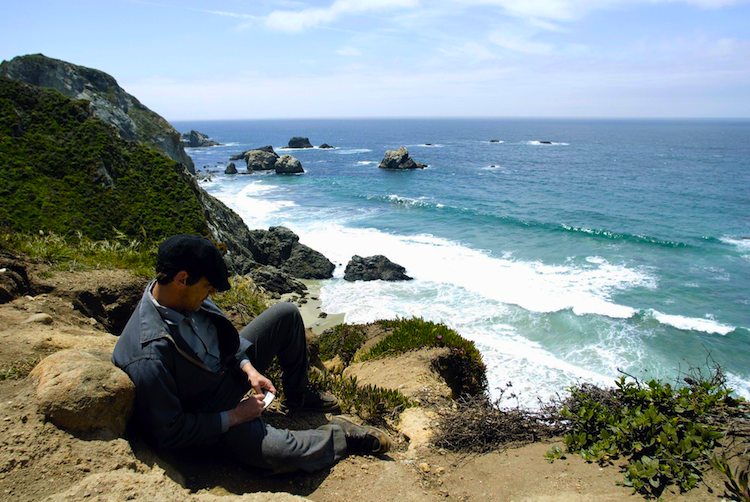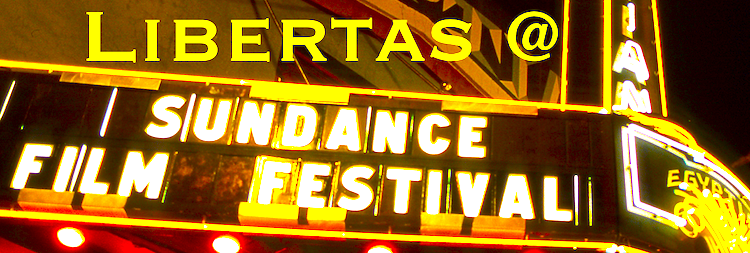By Joe Bendel. Big Sur has a long history of inspiring artists, from Henry Miller to Charles Lloyd. Jack Keouac was also one of them, sort of. Adapting Kerouac’s autobiographical novel of his time spent along California’s scenic central coast, Michael Polish conveys an impressionistic sense of Kerouac’s language and the lonesome unspoiled environment in Big Sur, which screens during the 2013 Sundance Film Festival.
To protect the guilty (most definitely including himself), Kerouac changed the names of the Beat elite who appear in Big Sur. Polish changes them back, perhaps to make the film more commercial, but frankly there is no mistaking Kerouac or the Cassadys (or Ferlinghetti for that matter). Only a few years have passed since the publication of On the Road, but Kerouac is not dealing with success well. The literary rock star has come to California with the intention of holing up in Ferlinghetti’s Big Sur cabin to purge his soul. However, a typical Kerouac bender delays his arrival at City Lights.
Eventually, Ferlinghetti ensconces Kerouac in Big Sur, hoping his time spent in isolation will recharge his creative drive. For a few days Kerouac enjoys communing with nature, but he gets antsy quickly. Before long, he is reconnecting with Neal Cassady, launching into a doomed relationship with his friend’s soon-to-be-former mistress, and generally carousing with the usual suspects.
As plot goes, Big Sur leans to the sparse end of the spectrum, making it a real cinematic challenge. However, Polish arguably captures the rhythm and vibe of Kerouac’s language better than any other filmmaker, directly incorporating generous excerpts from Kerouac’s novel, read by Jean-Marc Barr in the persona of the author. Accompanied by images of natural beauty and underscored by a subtle but stylistically diverse score, Big Sur is not unlike a cinematic tone poem at times.
Yet the film is surprisingly peppy. Rather than hold one striking image for an interminable length of time, Polish shows the audience one after another, and yet another, in rapid succession. As result, Big Sur always feels like it is getting somewhere, even when it has little narrative business to show for itself.
A rich visual feast, Big Sur functions as a heck of a show-reel for cinematographer M. David Cullen (whose extensive credits include Jennifer’s Body). Barr also sounds great reciting Kerouac, but dramatically his work is something of a mixed bag. He lacks Kerouac’s considerable physicality and charm, but he certainly expresses the restlessness that defined the author, as well as his aura of danger and dissolute inclinations. Cullen’s lens also loves Kate Bosworth. Nonetheless, she is largely wasted as Kerouac’s increasingly exasperated lover Billie, but Anthony Edwards adds an appealing human dimension to the proceedings as Ferlinghetti.
With the choice to see one Beat Generation-related film from this year’s Sundance, it should be Big Sur rather than the over-hyped Kill Your Darlings. Granted, it might not completely pull it off, but Polish’s film comes far closer to translating Kerouac to the big screen than other recent attempts. There are even surprisingly playful moments that suggest the Pull My Daisy spirit. Recommended for Beat fans, Big Sur screened as a Premiere selection of this year’s Sundance Film Festival.
LFM GRADE: B
Posted on January 30th, 2012 at 3:37pm.

